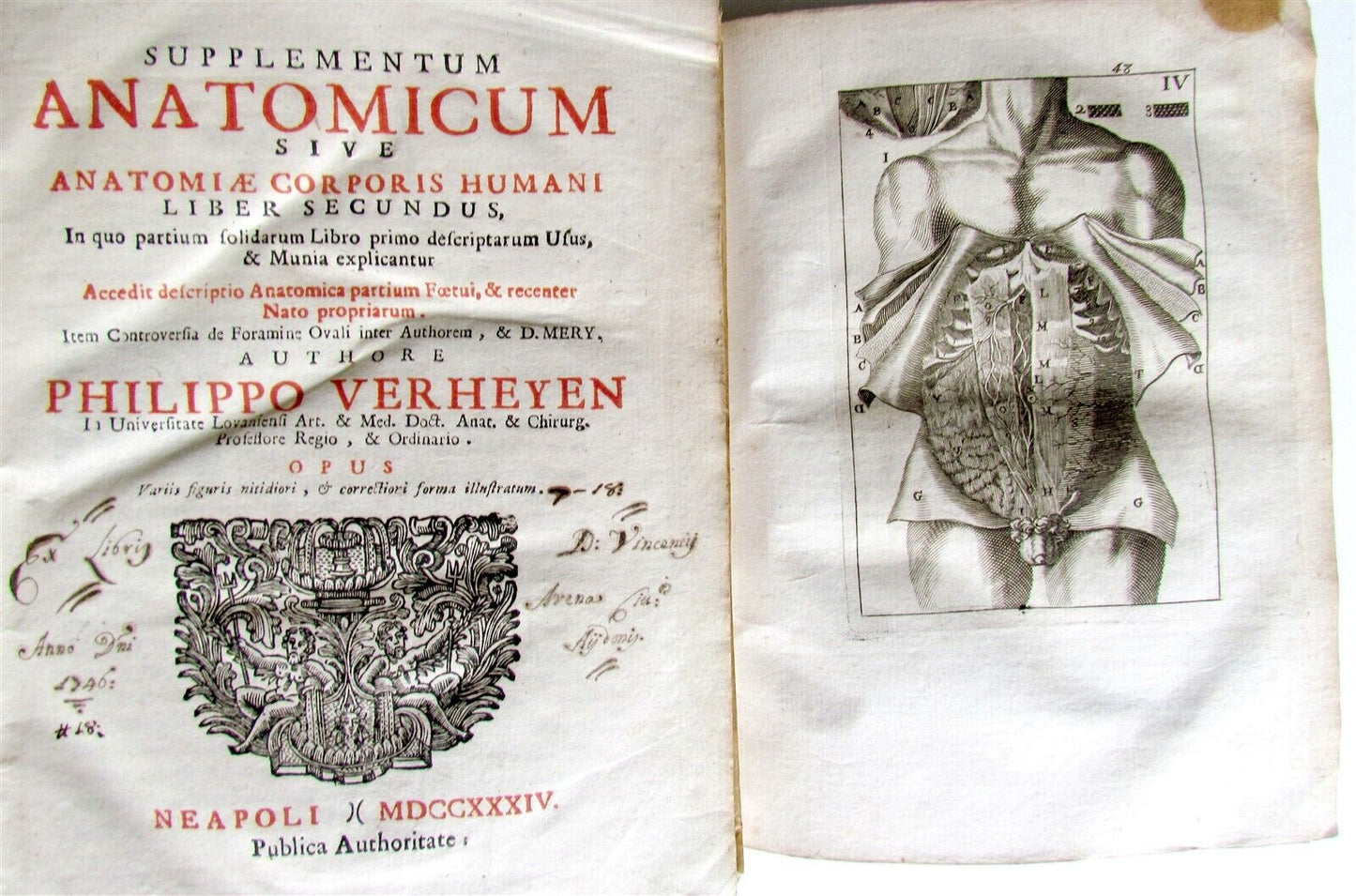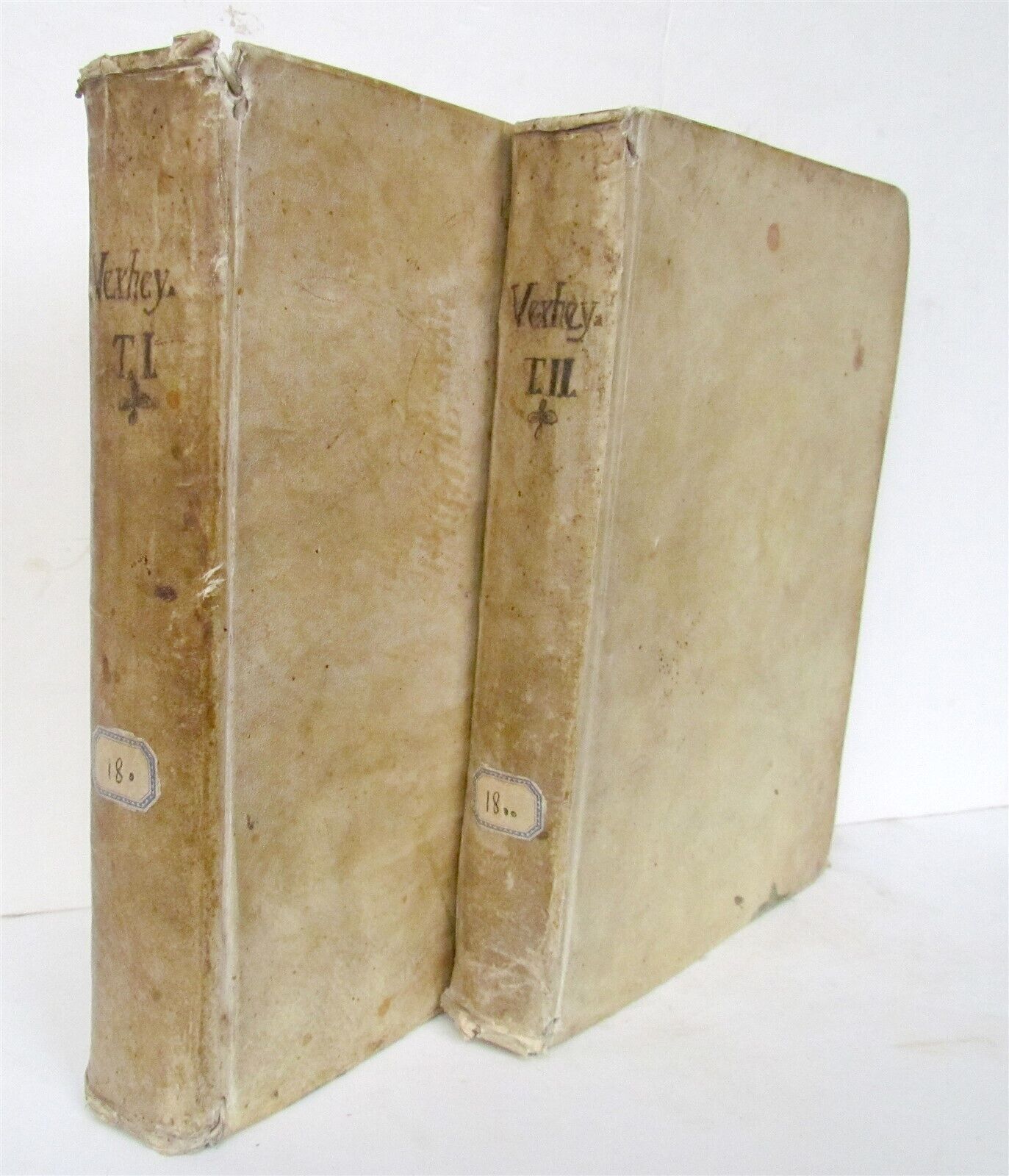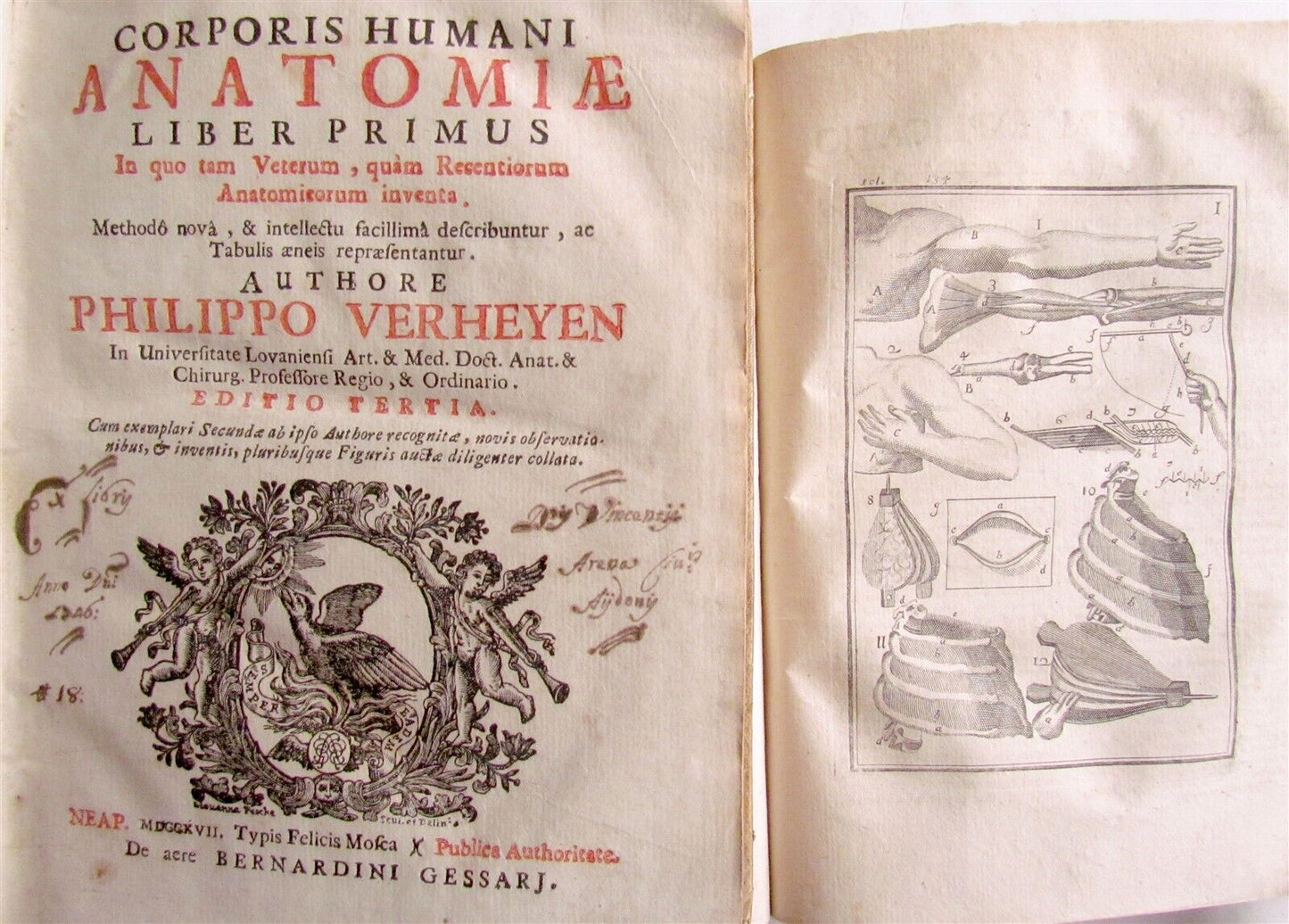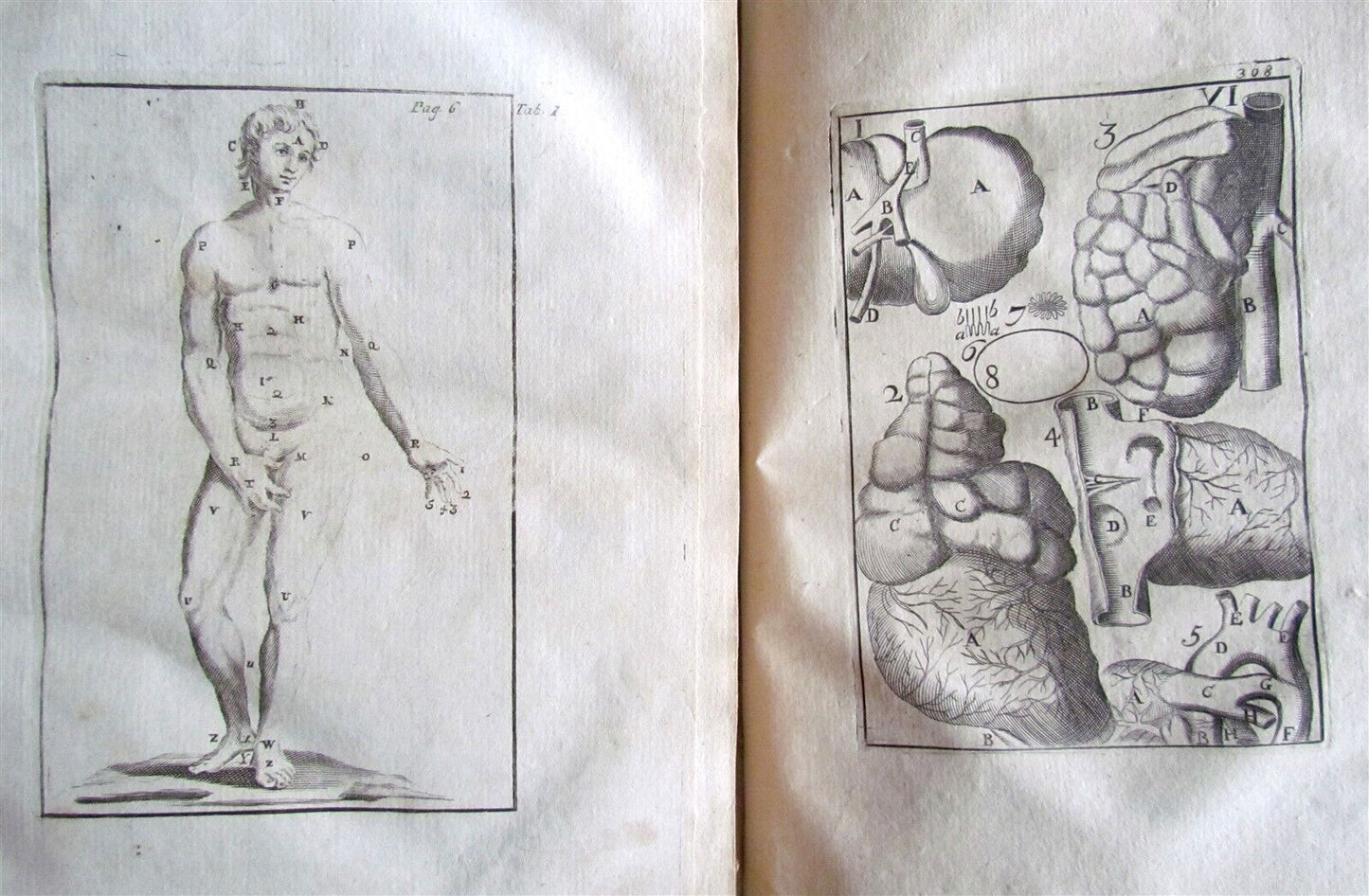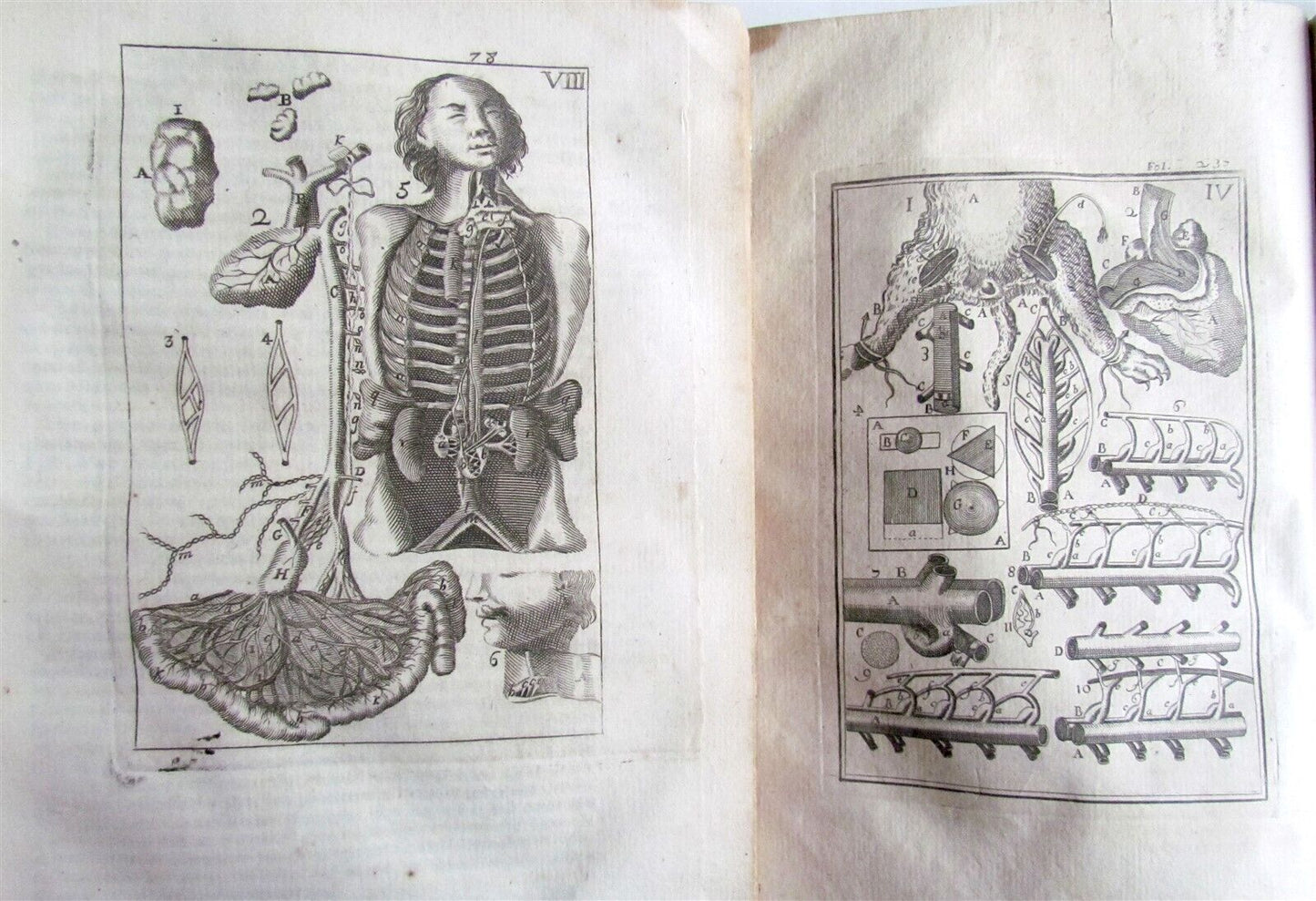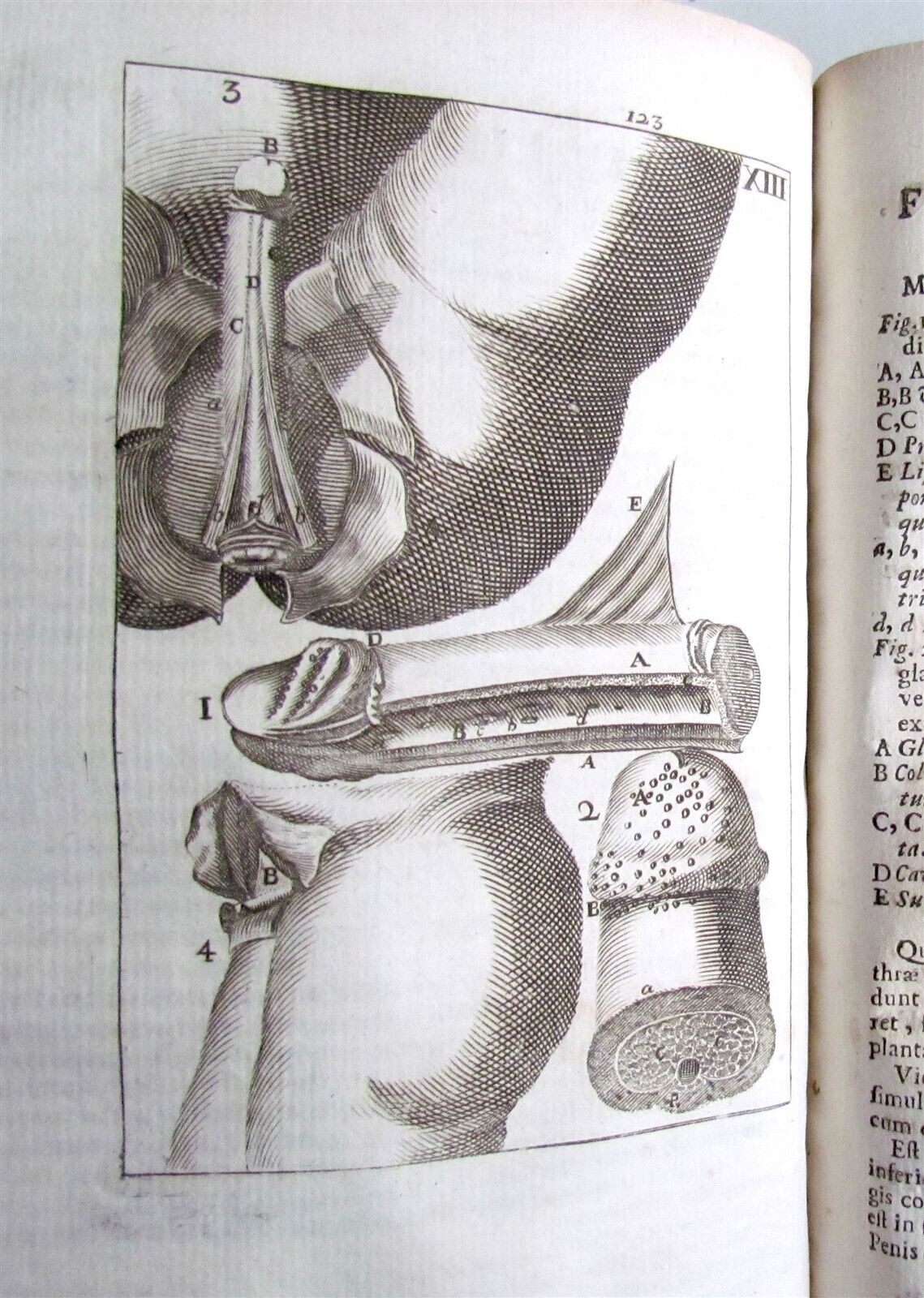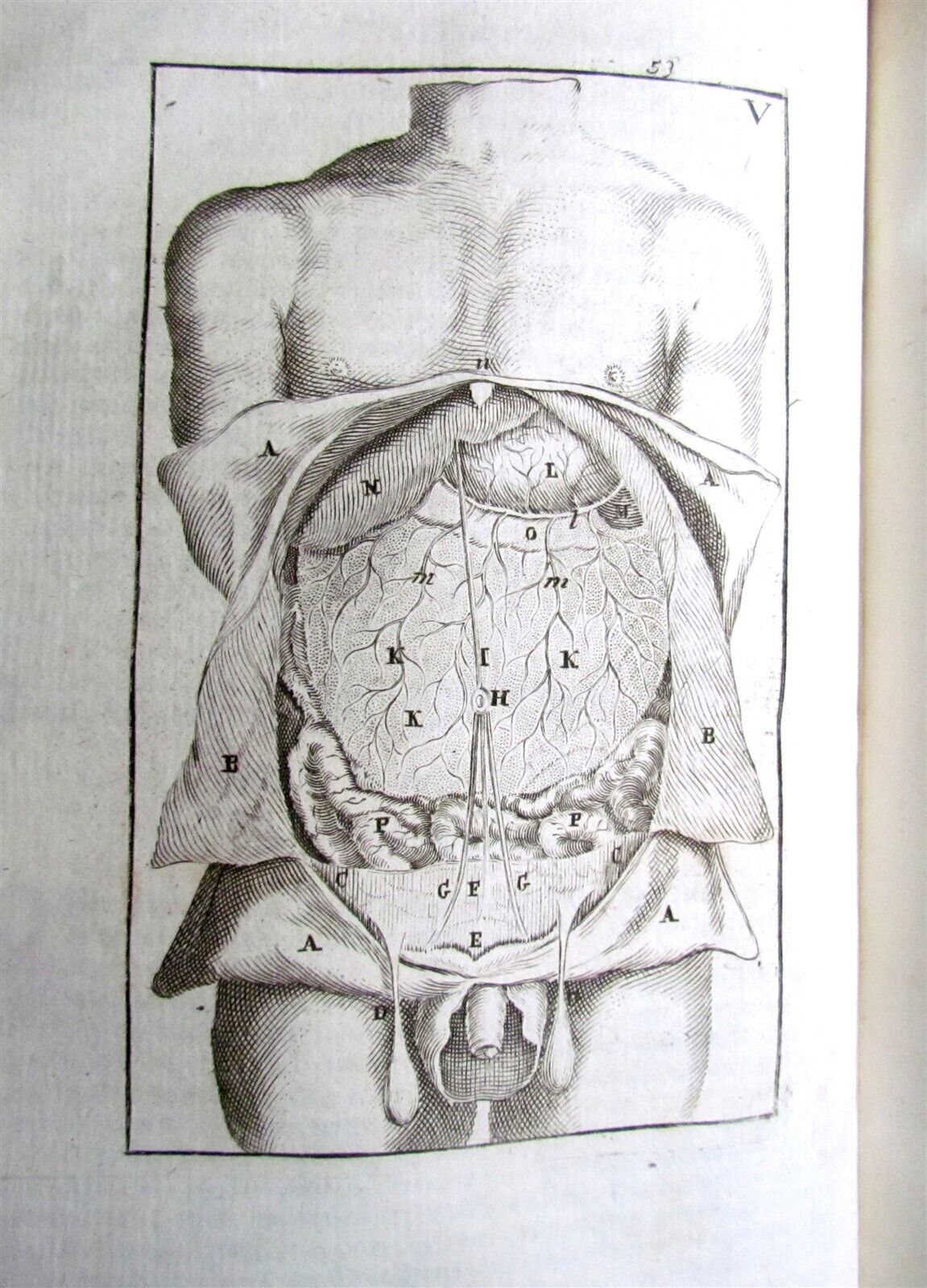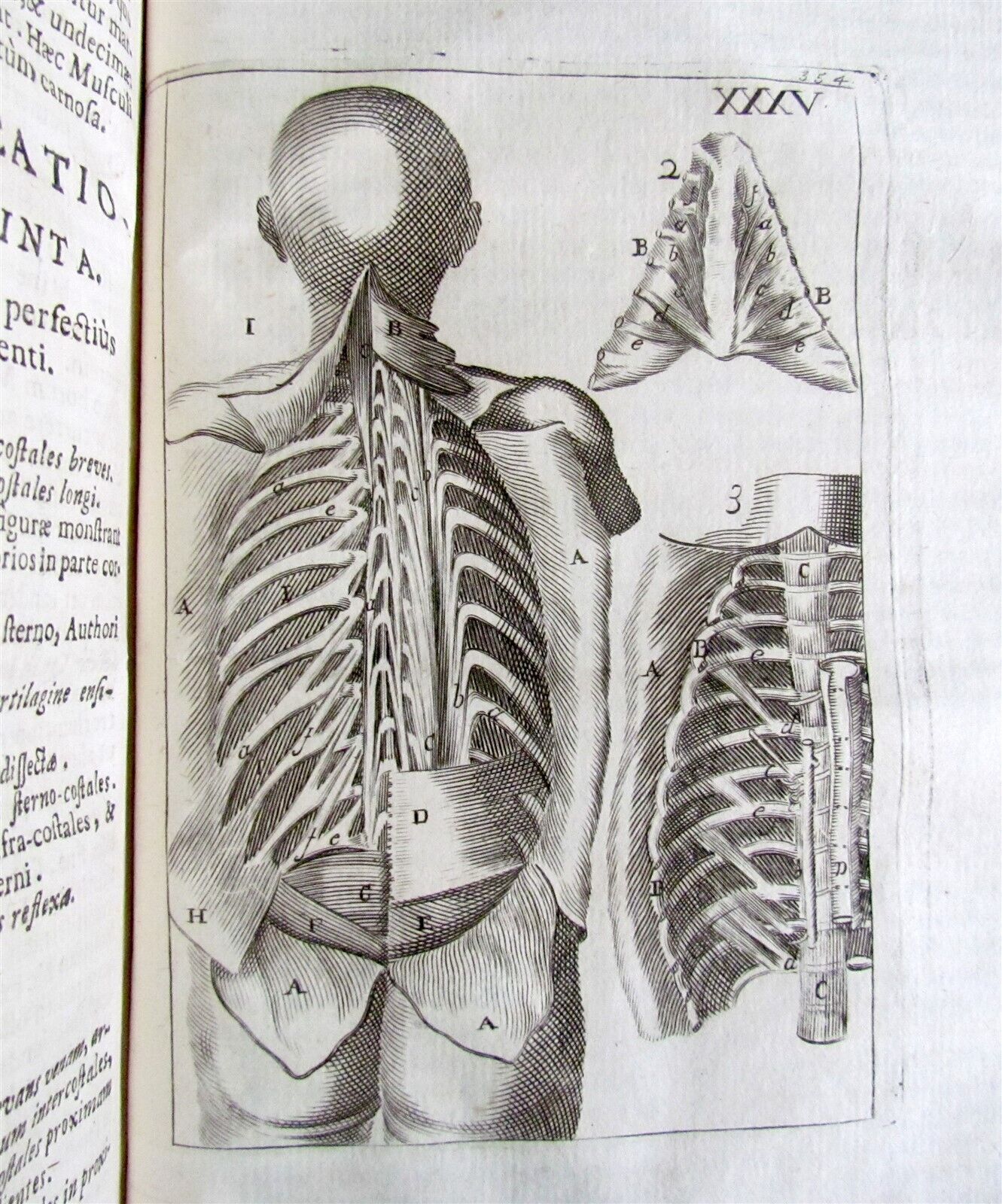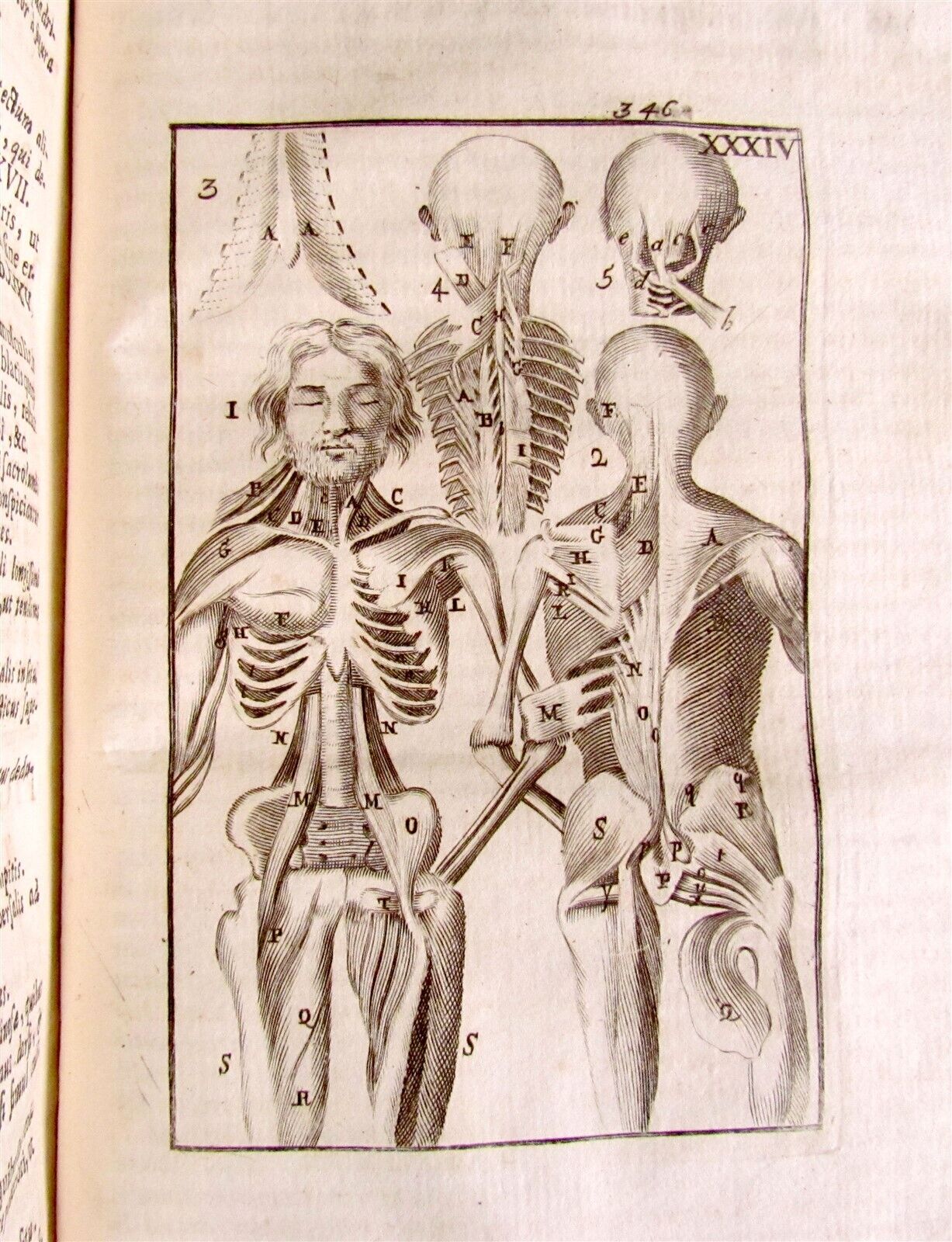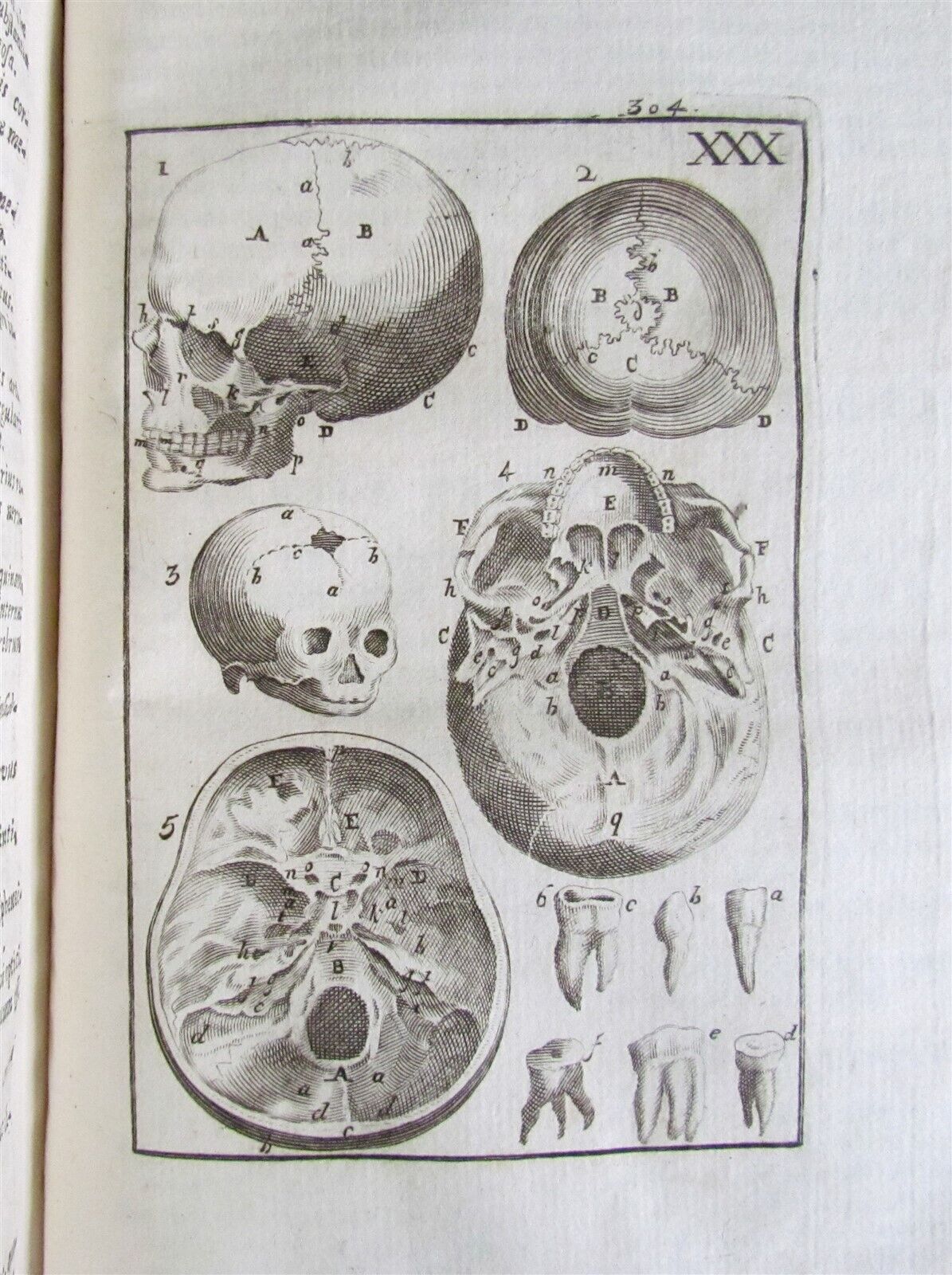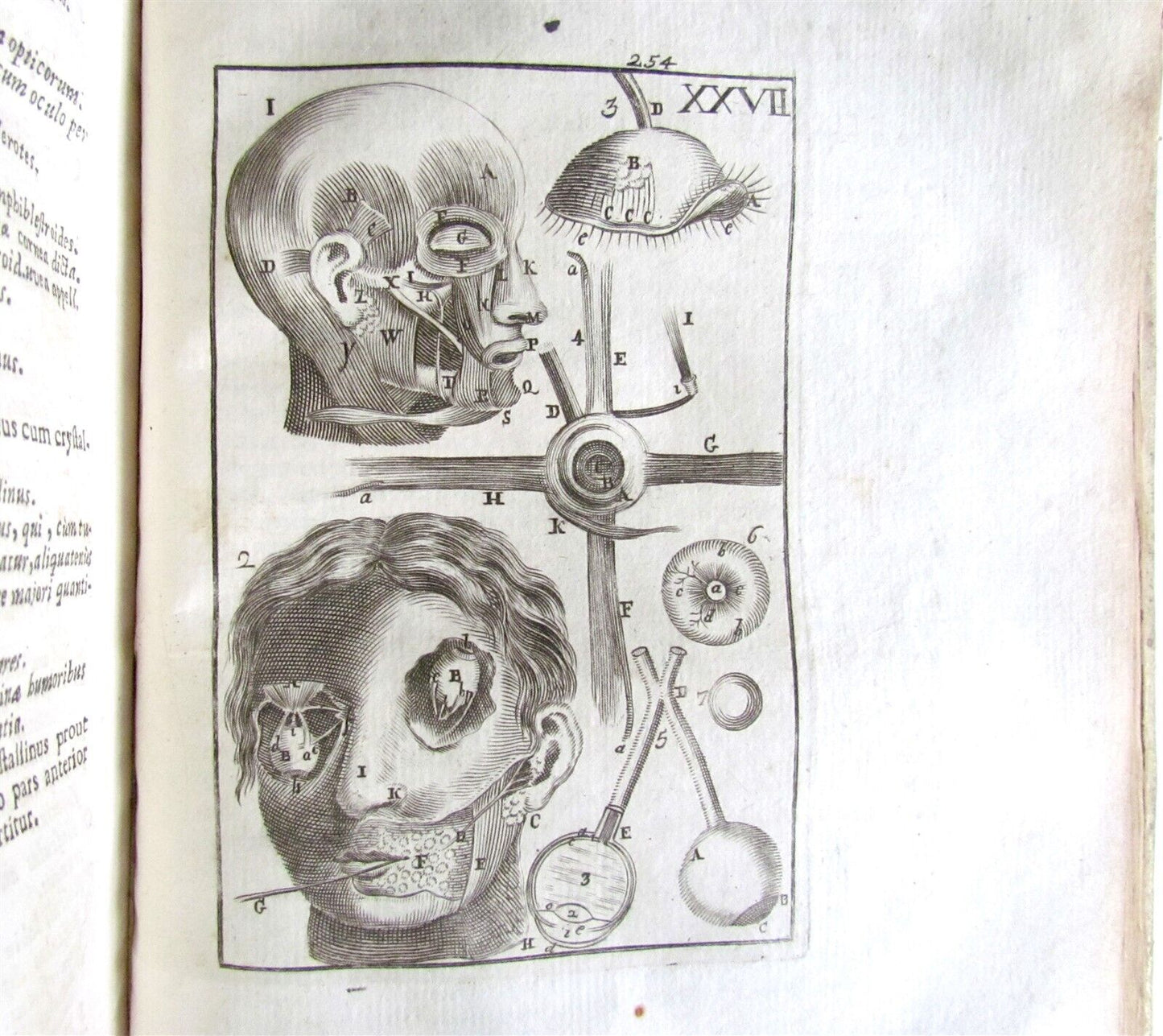Motka
1717 2 VOLUMES ANATOMY ILLUSTRATED CORPORIS HUMANI ANATOMIAE antique in LATIN
1717 2 VOLUMES ANATOMY ILLUSTRATED CORPORIS HUMANI ANATOMIAE antique in LATIN
Regular price
$999.60 USD
Regular price
$1,428.00 USD
Sale price
$999.60 USD
Unit price
per
Couldn't load pickup availability
editio tertia...
Supplementum Anatomicum sive anatomiae corporis humani liber secundus.
by Philippo Verheyen
2 vols.
Naples, Gessari ; 1717-34
Size 7 by 9"
With 1 engraved portrait and 46 copper plates
10 sheets, 403; XVI, 348 pp
Vellum bound with manuscript title on the spines
Third edition with the supplement, this contains, among other things, a writing on the controversy between Verheyen and D. Mery about the use of the 'foramen ovale' and about the blood circulation of the fetus.
Good condition, minor wear, some foxing, one leaf with margin damage
Text in Latin
============
Philip Verheyen (1648 – 1710) was a Flemish surgeon, anatomist and author.
As the third child of seven, Verheyen was born in Verrebroek, in modern Belgium (most likely in his parents' house, standing on a small plot of owned land in the area called "Borring", close to the border with Meerdonk), to Thomas Verheyen and Joanna Goeman. He was baptized in the parish church of Verrebroek on 24 April 1648. Little is known of his childhood. As a young boy he was probably a cowherd, and it is assumed that he learned to read and write at the local parish school. Local folk tales claim that he had such a brilliant memory that he could recite the pastor's sermon after attending mass on Sunday.
The pastor of the village took him under his wing and he was sent to Leuven in 1672 where he spent three years at Trinity College.
Concluding his studies in the liberal arts in 1675 Verheyen went on to study theology with the intention of following in the footsteps of his mentor and joining the clergy to become a priest. It was at this crucial juncture that an illness resulted in the amputation of his left leg rendering him unfit for the clergy. This event proved to be of utmost importance to the subsequent path he chose.
Embarking on a career in medicine, he initially continued at Trinity College and from 1681 to 1683 studied in Leiden. He returned to Leuven in 1683, obtaining the doctorate in medicine there. He gave lessons in anatomy and surgery and also practiced medicine. As a result of his many publications, in a short period of time he acquired renown both in and outside the country. The year 1693 saw the first publication of his Corporis Humani Anatomia.
Philippe Verheyen died in November 1710 and was buried in the churchyard of the church of St Michael in Leuven. Prior to his death, he had given orders for his body to be buried outside the church so as not to infect the building with "unwholesome vapours".
=============================

Powered by 's eCommerce Solution
Listed with ExportYourStore.com
